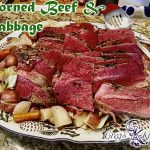Cooking with herbs is like icing a cake: it makes the dish complete. It may seem daunting at first. There are so many herbs and so many recipes to choose from. And, while using recipes that include herbs is a good way to get started, the excitement comes when the unique flavor of each herb is understood and can be used to create your own special dish. Here are three tips to get you started.
1. Take a clean leaf of the herb and chew but don’t swallow. Experience your herbs like you would a fine wine; check the fragrant bouquet, let the leaf meet the tongue and chew thoughtfully. It is not necessary to swallow. Learning about the flavor of the herb this way will help you to decide if it will make the perfect pot roast or sorbet.
2. Add fresh chopped herbs (one at a time) to something bland yet familiar, like butter or sour cream or potatoes. This allows the intensity of the herb to stand on its own and helps you to know how much of the herb to add.
3. Just start playing; add a little Rosemary or Tarragon to the potatoes or the chicken; sprinkle some Oregano on your pizza or pasta; lay sprigs of Thyme on your roast. Keep notes, at least at first of what was pleasing, how much was used and what didn’t work. Note whether the herbs were fresh or dried or a combination of both. You will find this invaluable, especially when you start blending herbs together to get more complex flavors
The most flavorful culinary herbs are harvested from well tended plants in their leaf making stage. All herbs have two phases of growth: the leaf stage and the flower (or reproductive stage). When the plant enters its flowering stage, leaf production slows or stops and the leaves on the plant may become bitter, grassy, woody, or yellowed. These leaves are not of optimum quality for cooking. Flowering can be delayed by harvesting kitchen herbs often. If your herbs grow too fast to use them all fresh, dry or process the extra for later use.
Flowers do make colorful, fragrant garnishes for salads, sautés, and desserts. And, you might want to consider growing two of the same culinary herb, one that can be allowed to flower and one that can be kept pruned for leaf production. Or, just enjoy both phases of growth on a single plant. After flowering, herbs should be cut back to encourage bushy new growth.
![]()
![]()












Be the first to comment